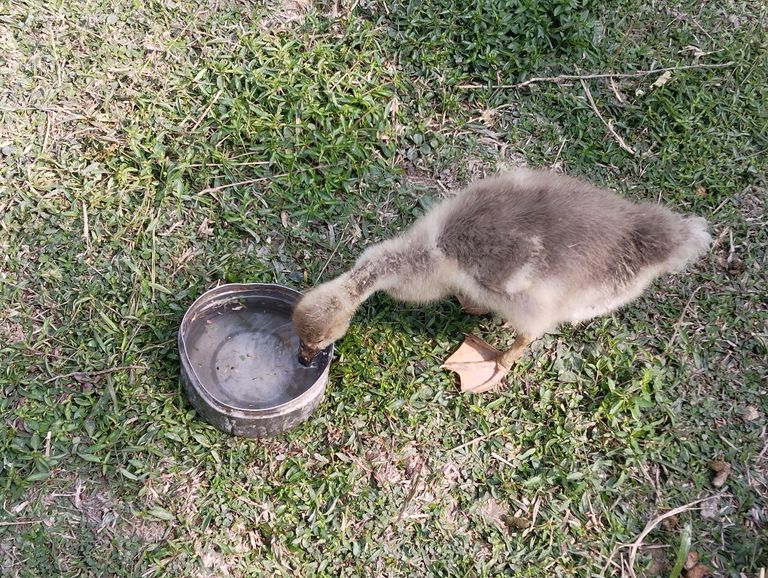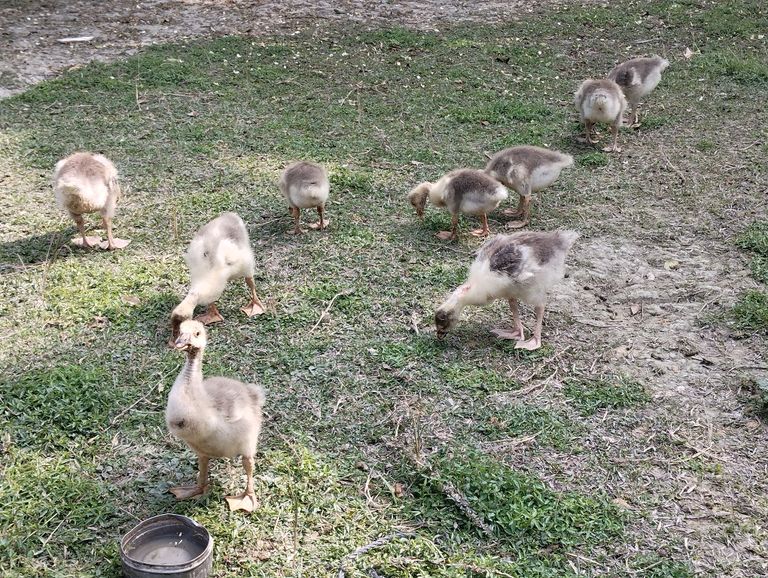
Raising Goslings A Comprehensive Guide to Caring for Baby Geese.
Raising goslings (baby geese) can be a rewarding experience. With proper care and attention, you can ensure these charming creatures grow into healthy, happy adults. Whether you're raising them for farming, as pets, or to enhance your homestead, this guide will cover everything you need to know about nurturing goslings.
- Preparing for Goslings
Before bringing goslings home, you’ll need to prepare their living environment. Proper planning ensures their safety, comfort, and overall health.
a. Brooder Setup
Space: Each gosling needs about 1 sq. ft. of space for the first couple of weeks. As they grow, increase this to 3-4 sq. ft. per gosling.
Bedding: Use absorbent materials like straw, wood shavings, or hay. Avoid newspaper as it can be slippery.
Heat Source: Goslings need warmth since they can't regulate their body temperature. Use a heat lamp or brooder heater. Start with a temperature of 90°F (32°C) during the first week and decrease it by 5°F weekly until they are fully feathered (around 4-6 weeks old).
b. Water and Feed
Provide fresh, clean water in shallow containers to prevent drowning.
Use waterers designed for chicks or goslings to ensure safety.
Introduce a non-slip mat around waterers to keep the bedding dry.
- Feeding Goslings
Proper nutrition is crucial during the early stages of a gosling's life.
a. Starter Feed
Provide a high-quality, unmedicated waterfowl or poultry starter feed with 20% protein for the first 2-3 weeks.
Avoid medicated feeds as they can harm goslings.
b. Transition to Grower Feed
After 3 weeks, switch to a grower feed with 15-16% protein.
Supplement their diet with fresh greens like grass, dandelion leaves, or lettuce. Geese are natural grazers and benefit from access to fresh forage.
c. Grit and Calcium
Offer fine grit to aid digestion, especially if you introduce greens early.
For laying females, provide calcium supplements like crushed oyster shells later in their development.
- Health and Hygiene
Healthy goslings require a clean environment and regular monitoring.
a. Cleanliness
Change bedding frequently to prevent moisture and bacteria buildup.
Clean food and water containers daily.
b. Disease Prevention
Observe goslings for signs of illness, such as lethargy, loss of appetite, or drooping wings.
Ensure proper ventilation in the brooder to avoid respiratory issues.
c. Vaccinations
Consult a veterinarian about necessary vaccinations based on your location and purpose for raising geese.
- Socialization and Behavior
Goslings are social creatures and thrive when given attention and interaction.
a. Handling
Handle goslings gently and regularly to make them comfortable with humans.
Avoid rough handling as it can cause stress.
b. Social Groups
Raise goslings in groups as they are highly social. Isolated goslings may become stressed and exhibit behavioral issues.
- Transition to Outdoor Living
Once goslings are fully feathered and the weather is suitable, they can move outdoors.
a. Grazing Area
Provide a secure, predator-proof enclosure with access to grass.
Ensure there is shade and shelter for protection from extreme weather.
b. Water Access
Geese love water. Introduce them to shallow water bodies like a kiddie pool. Make sure it’s safe and easy for them to get in and out.
- Common Challenges and Solutions
a. Predators
Geese are vulnerable to predators like foxes, raccoons, and hawks. Secure their living area with proper fencing and close supervision.
b. Feather Picking
Overcrowding or lack of nutrients can lead to feather picking. Ensure enough space and a balanced diet.
c. Weather Sensitivity
Protect goslings from extreme temperatures. Provide shade during summer and insulated shelters during winter.
Raising goslings requires time, effort, and commitment, but the results are worth it. These intelligent, affectionate birds bring joy to any homestead while providing ecological benefits. By following this guide, you can raise healthy, happy goslings and enjoy the experience of nurturing them into adulthood.
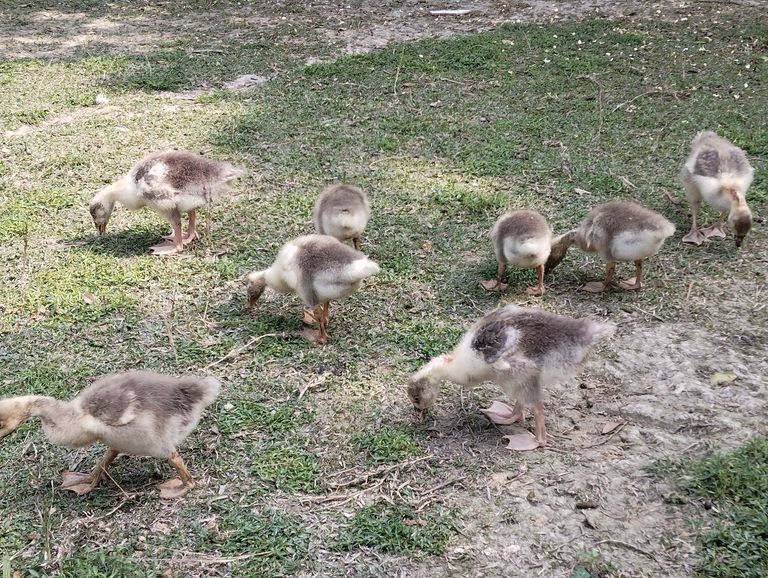
The Benefits of Eating Swan Meat
Swan meat, though not as commonly consumed as other types of poultry, has been a delicacy in certain regions and historical periods. This unique meat is rich in nutrients and offers a distinctive flavor profile that sets it apart from chicken, duck, or turkey. Let’s dive into the benefits of eating swan meat, its nutritional value, and its cultural significance.
Nutritional Value of Swan Meat
Swan meat is an excellent source of high-quality protein, which is essential for muscle development, tissue repair, and overall growth. Additionally, it contains essential vitamins and minerals such as:
Iron: Helps in the production of red blood cells, improving oxygen transportation in the body.
Zinc: Strengthens the immune system and aids in wound healing.
Vitamin B12: Supports brain function and helps prevent anemia.
Omega-3 Fatty Acids: Promotes heart health and reduces inflammation.
Swan meat is leaner than many other poultry options, making it a good choice for those looking to maintain a healthy weight while enjoying a protein-rich meal.
Health Benefits of Eating Swan Meat
- Boosts Energy:
The high protein content and presence of B vitamins in swan meat contribute to increased energy levels. It helps in combating fatigue and supports a healthy metabolism.
- Strengthens Immunity:
With its rich supply of zinc and other antioxidants, swan meat can enhance the body’s ability to fight off infections and illnesses.
- Promotes Heart Health:
Omega-3 fatty acids in swan meat contribute to cardiovascular health by reducing bad cholesterol levels and promoting good cholesterol. These fats also help lower blood pressure and reduce the risk of heart disease.
- Improves Bone Health:
Swan meat is a good source of phosphorus, which is vital for strong bones and teeth. Regular consumption, in moderation, can help in preventing bone-related issues like osteoporosis.
- Supports Brain Function:
The vitamin B12 and omega-3 fatty acids in swan meat are beneficial for maintaining cognitive function, improving memory, and reducing the risk of neurodegenerative diseases.
Culinary Uses of Swan Meat
Swan meat is often prepared as a roasted or stewed dish. Due to its gamey flavor, it pairs well with robust herbs and spices like rosemary, thyme, and garlic. In medieval Europe, swans were considered a luxurious dish and were often served at royal banquets. Even today, in certain parts of the world, swan meat is regarded as a delicacy and is prepared for special occasions.
Ethical and Legal Considerations
Before consuming swan meat, it is essential to understand the ethical and legal aspects surrounding it. In many countries, swans are protected species, and hunting or consuming them is prohibited. Always ensure that the meat is sourced legally and ethically.
Moderation is Key
While swan meat offers numerous health benefits, it is important to consume it in moderation. Overeating any type of meat can lead to health issues such as high cholesterol, heart disease, and obesity. Balance your diet with plenty of fruits, vegetables, and whole grains for optimal health.
Swan meat is a unique and nutritious option that provides a variety of health benefits. From boosting energy levels to supporting heart and brain health, it can be a valuable addition to your diet when consumed responsibly. However, due to legal and ethical considerations, it’s crucial to ensure that swan meat is sourced appropriately. If you ever have the chance to try this delicacy, savor its rich flavors and appreciate its nutritional value.
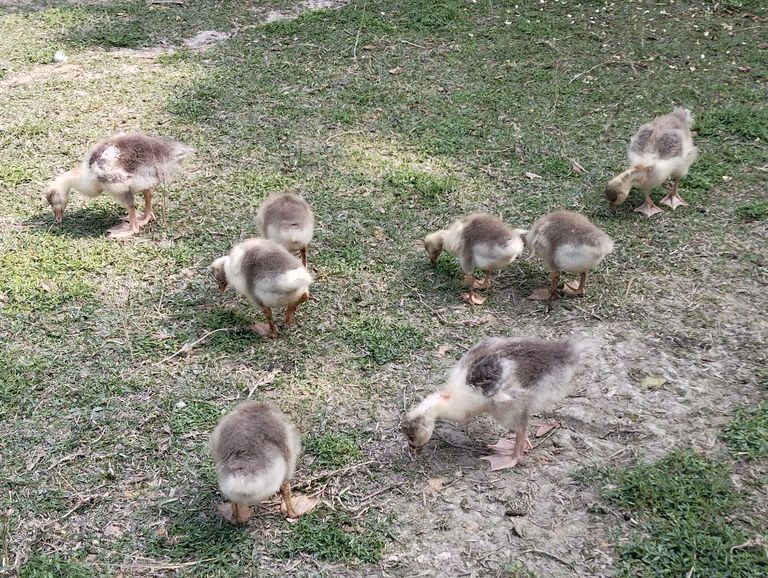
Building a Home in the Sky
The sky has always been a source of wonder and inspiration for humankind. Whether gazing at its vastness or marveling at its changing hues, it is a reminder of endless possibilities and dreams. But have you ever imagined building a home in the sky? A metaphorical house among the clouds where dreams, imagination, and reality coexist. This concept may sound poetic, but it holds deeper meanings for those who dare to dream big.
The Sky: A Symbol of Boundless Potential
The sky is limitless, a blank canvas for creativity and hope. It represents freedom, opportunity, and the ability to transcend boundaries. Building a home in the sky symbolizes creating a space where aspirations can take flight, far from the constraints of the earth below.
A home in the sky isn’t just about physical structures; it’s about crafting a mental and emotional haven where ideas can grow. Imagine a life where your thoughts float like clouds, free from fear and negativity, where your ambitions rise like the sun, filling the world with light.
Dreamers Who Built Their Homes in the Sky
Throughout history, many individuals have metaphorically built homes in the sky. They dared to dream beyond the ordinary and reached extraordinary heights.
- The Wright Brothers: Orville and Wilbur Wright turned their dream of flight into reality, proving that the sky was not an unattainable frontier.
- Neil Armstrong: His iconic words, "One small step for man, one giant leap for mankind," epitomize the spirit of reaching for the stars—literally.
- Visionary Architects: From skyscrapers piercing the clouds to futuristic floating cities, architects have been working tirelessly to merge dreams with reality.
These individuals and their achievements remind us that the sky is not just a limit but an invitation to imagine more.
Building Your Sky Home: A Metaphor for Achieving Goals
How do you build your metaphorical home in the sky? It starts with dreaming big and taking actionable steps to bring those dreams to life. Here are some steps:
- Lay a Strong Foundation: Every dream requires a solid base. Identify your passions and skills and use them as the foundation for your aspirations.
- Build Pillars of Determination: Like strong pillars supporting a home, determination will help you overcome challenges. Stay focused and persistent.
- Design Windows of Positivity: Let positivity and hope flood your space. Surround yourself with people and experiences that inspire you.
- Add the Roof of Vision: A clear vision of your goals will protect you from distractions and keep you on track.
Sky Homes in the Real World
While the idea of building a metaphorical home in the sky is inspiring, the modern world is also exploring literal versions of this dream. Skyscrapers have been touching the clouds for decades, and futuristic concepts like airborne habitats or floating cities are becoming more plausible with advancements in technology.
Take, for example, NASA's research into creating habitats on Mars or Elon Musk's vision of colonizing other planets. These projects represent humanity's desire to expand its horizons and truly live among the stars.
The Challenges of Skyward Dreams
Of course, building a home in the sky—literal or metaphorical—is not without challenges. The higher you aim, the greater the obstacles. Fear of failure, societal expectations, and self-doubt often cloud our vision. But just as engineers overcome physical barriers like wind and gravity when constructing skyscrapers, we too can conquer our internal struggles with resilience and faith in our abilities.
Conclusion: Your Home in the Sky Awaits
Building a home in the sky is about more than just achieving success; it’s about daring to dream, challenging limitations, and creating a legacy that inspires others. As you look up at the endless sky, let it remind you of your potential to rise above and create something extraordinary.
Your home in the sky is waiting—start building it today. Let your imagination soar, and let your dreams touch the clouds. After all, the sky is not the limit; it’s just the beginning.
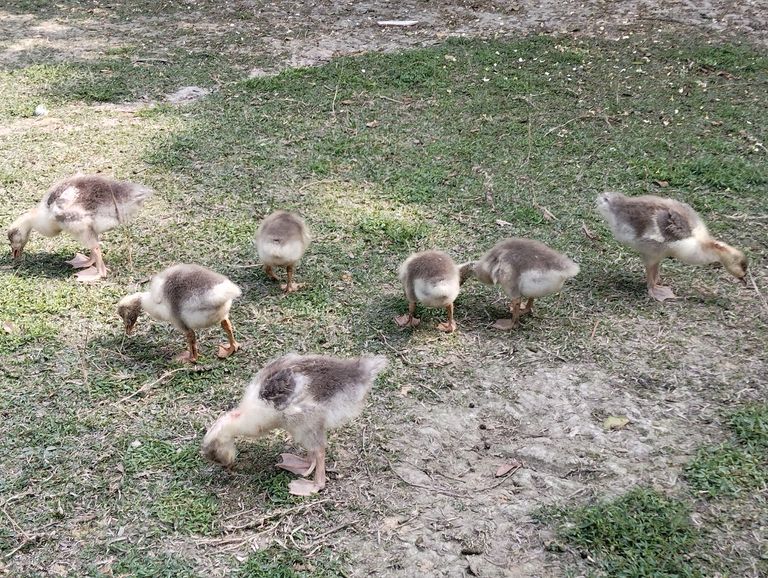
Commercialization of Geese: A Comprehensive Guide
Geese, known for their elegant demeanor and utility, have been a valuable part of the agricultural ecosystem for centuries. The demand for geese and their by-products, such as meat, feathers, and eggs, has steadily grown in both local and international markets. If you’re looking to venture into the commercialization of geese, this guide will provide you with an in-depth understanding of the process, from breeding to marketing.
- Understanding the Geese Market
The market for geese can be broadly categorized into the following sectors:
Meat Production: Goose meat is considered a delicacy in many cuisines around the world. Its rich taste and high nutritional value make it highly sought after.
Eggs: Though not as popular as chicken eggs, goose eggs are larger and are often used in baking or gourmet cooking.
Feathers and Down: Goose feathers and down are used in high-quality bedding and clothing products such as pillows, duvets, and jackets.
Live Birds: Many farmers and enthusiasts buy live geese for breeding, ornamental purposes, or as guard animals.
Understanding your target market is crucial to developing a successful geese commercialization strategy.
- Breeding and Raising Geese
To commercialize geese effectively, you need a strong foundation in their breeding and raising process.
Selection of Breed: Popular breeds include the Toulouse, Embden, and Chinese geese. Each breed has specific characteristics suited to different market demands.
Housing: Geese require well-ventilated and secure housing. Ensure adequate space to avoid stress and promote healthy growth.
Feeding: Geese primarily graze on grass, but supplemental feeding with grains and formulated feed ensures proper growth and productivity.
Breeding: A healthy male-to-female ratio (typically 1:4) is essential for optimal breeding. Provide nesting areas for egg-laying.
- Product Processing and Packaging
Once geese are mature, processing their products for the market becomes the next step.
Meat Processing: Ensure compliance with local food safety regulations when processing goose meat. Use hygienic methods and offer properly packaged products.
Feathers and Down: The feathers should be cleaned, sorted, and processed before being packaged. High-quality down fetches better prices in the market.
Egg Handling: Goose eggs should be cleaned, graded, and packaged securely to prevent breakage.
- Marketing Strategies
Effective marketing plays a crucial role in the successful commercialization of geese. Here are some strategies to consider:
Local Markets: Start by selling directly to local consumers, restaurants, and stores. Build relationships with local buyers to establish trust.
Online Platforms: Create an online presence through social media, e-commerce platforms, or your own website. Highlight your products’ quality and uniqueness.
Exports: Research international markets with a demand for geese products, such as Europe and Asia. Ensure your products meet export quality standards.
Niche Markets: Focus on niche markets such as organic meat enthusiasts, luxury bedding manufacturers, and gourmet chefs.
- Challenges in Geese Commercialization
Like any agricultural venture, the commercialization of geese comes with its challenges:
High Initial Investment: Setting up infrastructure, purchasing breeding stock, and ensuring quality feed can require significant investment.
Disease Management: Geese are susceptible to diseases such as avian influenza. Implement biosecurity measures to protect your flock.
Market Competition: Competing with established poultry industries can be tough. Highlight the unique benefits of geese products to stand out.
- Sustainability in Geese Farming
Modern consumers are increasingly interested in sustainable farming practices. Incorporate the following measures into your business:
Free-Range Farming: Allow geese to graze freely, which is both cost-effective and environmentally friendly.
Organic Practices: Avoid the use of chemicals and antibiotics in feed and flock management.
Waste Management: Use goose droppings as organic manure for farming.
- Financial Planning
To ensure profitability, a well-structured financial plan is necessary. Consider the following:
Cost Analysis: Calculate the costs of infrastructure, feed, labor, and marketing.
Profit Margins: Estimate the profit margins for each product category (meat, eggs, feathers).
Scaling: Plan for business expansion, such as increasing flock size or targeting new markets.
The commercialization of geese offers a lucrative opportunity for farmers and entrepreneurs alike. With the right knowledge, infrastructure, and marketing strategies, you can build a thriving geese-based business. Focus on quality, sustainability, and customer satisfaction to carve a niche in this growing market.
